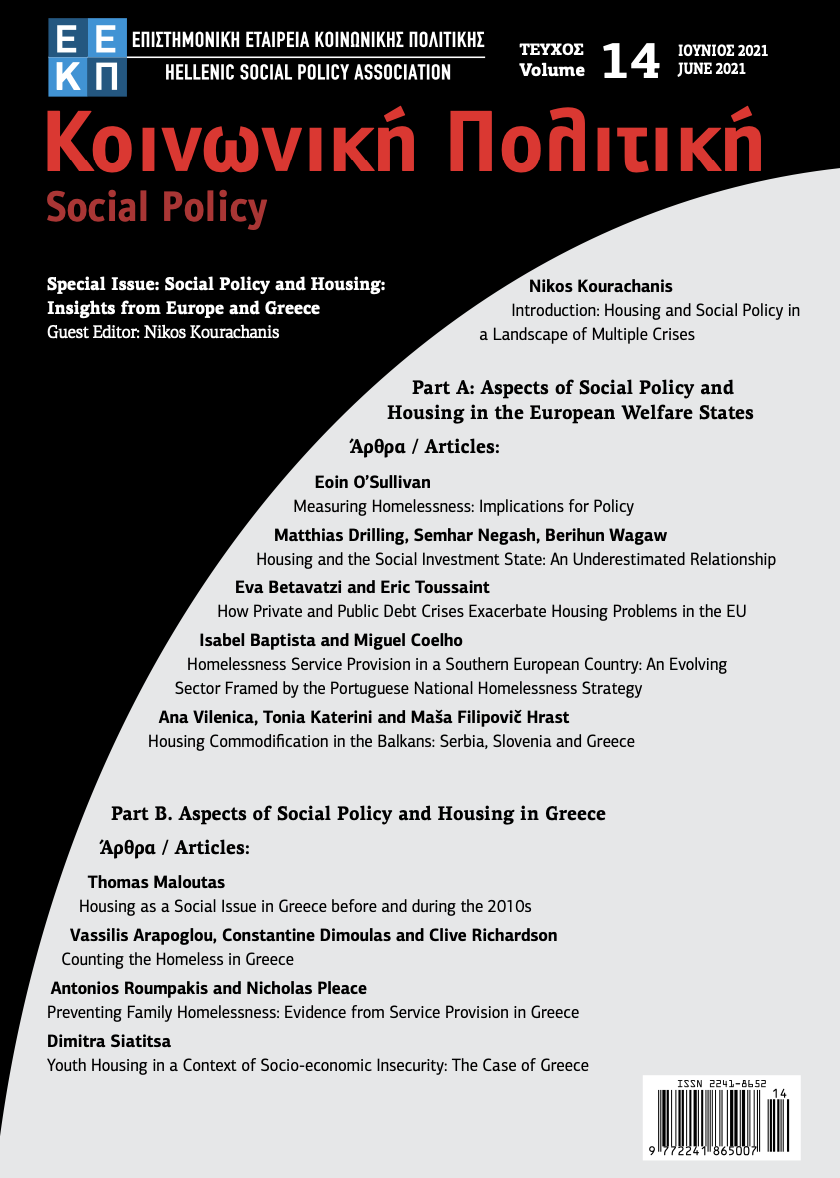Housing and the Social Investment State: An Underestimated Relationship
Abstract
The concept of the social investment state is currently the guiding concept for transforming the European welfare states. With the objective of “preparing instead of repairing” and its outstanding significance of the labour market, it is a marked counter-project to the Keynesian-Beveridge paradigm where welfare is provided through a (re)distributive lens of compensations. Instead, Europe is continuously transforming the educational programmes, family friendly policies etc. towards a labour market oriented regime that subordinates social policy. This paper discusses the role of housing and neighbourhood: the social investment approach does not position this policy field extensively, which means that it does not attach any importance to housing. This understanding is criticized in this article using the example of forced migration. It is argued that housing is a central pillar for achieving the goals of the social investment state. Not investing in housing accordingly can be interpreted a failure of the social investment approach.
Article Details
- Come citare
-
Drilling, M., Negash, S., & Wagaw, B. (2021). Housing and the Social Investment State: An Underestimated Relationship. Κοινωνική Πολιτική, 14, 35–49. https://doi.org/10.12681/sp.29076
- Fascicolo
- V. 14 (2021)
- Sezione
- Άρθρα

TQuesto lavoro è fornito con la licenza Creative Commons Attribuzione 4.0 Internazionale.
Οι συγγραφείς των άρθρων που δημοσιεύονται στο περιοδικό διατηρούν τα δικαιώματα πνευματικής ιδιοκτησίας επί των άρθρων τους, δίνοντας στο περιοδικό το δικαίωμα της πρώτης δημοσίευσης. Άρθρα που δημοσιεύονται στο περιοδικό διατίθενται με άδεια Creative Commons 4.0 και σύμφωνα με την άδεια μπορούν να χρησιμοποιούνται ελεύθερα, με αναφορά στο/στη συγγραφέα και στην πρώτη δημοσίευση για μη κερδοσκοπικούς σκοπούς και με δικαίωμα τροποποίησης μόνον με παρόμοια διανομή (αν αναμείξετε, τροποποιήσετε, ή δημιουργήσετε πάνω στο υλικό, πρέπει να διανείμετε τις δικές σας συνεισφορές υπό την ίδια άδεια όπως και το πρωτότυπο).



